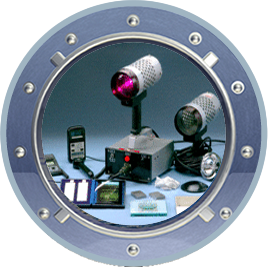It is one of the oldest non-destructive examination methods. The possibility to detect the cracks invisible with naked eyes in casts and welding thanks to oiled or watered lime is an examination method known and applied since last century. The method has reached nowadays by passing from several operations. It is an examination method widely used in industry in these days too.
If a solid having cracks on his surfaces is submerged in a liquid (penetrant) which is not too viscose, its surface is getting wet and the cracks are filling with this liquid. After the surface drying, the cracks full of liquid appear as wet lines.
If a solid having cracks on his surfaces is submerged in a liquid (penetrant) which is not too viscose, its surface is getting wet and the cracks are filling with this liquid. After the surface drying, the cracks full of liquid appear as wet lines.

The light diffusion due to the adhesion of the liquid overflowing to the surface form the crack signals the enlargement of the crack line. If chalk powder or talcum powder is sprayed as a very thin layer after waiting the surface for drying, the enlargement may be bigger because they will suck stronger the remaining liquid found in the cracks. Hence the very thin and invisible cracks may appear easily.
Specially prepared colored liquids and special developers having netter sucking properties have been developed to increase the contrast. Some penetrants are fluorescent. Some of those are washed with water pre-emulsified, with water post-emulsified as well as those washed with organic solvents. The time necessary for the penetrants to penetrate to the cracks can vary from a few minutes to twelve hours due to time conditions. The cleaning of excess penetrants from the surface is the most critical stage. In case of over-cleaning, rant that must remain in cracks may be removed partially or in whole. If the cleaning is insufficient, in this case the penetrant will not be removed sufficiently from the surface and this will prevent the determination of very little cracks because the background will be high. The two cases are harmful for the reliability and sensitivity.
Specially prepared colored liquids and special developers having netter sucking properties have been developed to increase the contrast. Some penetrants are fluorescent. Some of those are washed with water pre-emulsified, with water post-emulsified as well as those washed with organic solvents. The time necessary for the penetrants to penetrate to the cracks can vary from a few minutes to twelve hours due to time conditions. The cleaning of excess penetrants from the surface is the most critical stage. In case of over-cleaning, rant that must remain in cracks may be removed partially or in whole. If the cleaning is insufficient, in this case the penetrant will not be removed sufficiently from the surface and this will prevent the determination of very little cracks because the background will be high. The two cases are harmful for the reliability and sensitivity.
The visual and written contents found in this site have been provided by TİMGEMİ MÜHENDİSLİK.
All rights reserved 2011 ©
All rights reserved 2011 ©
